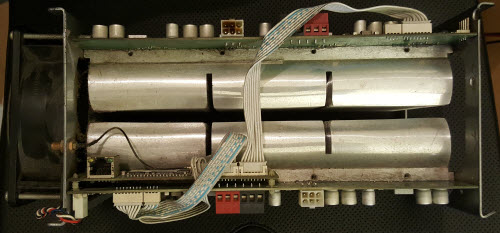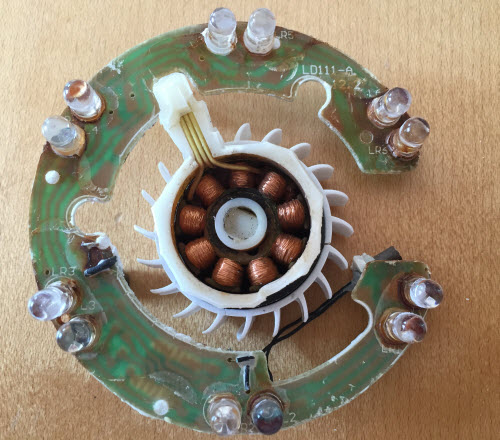My first book on electronics was Getting Started with Electronics; to this day, I still imagine electrons as oval-shaped particles with happy faces because of its illustrations. So naturally, I was thrilled to find that the book’s author, Forrest Mims III, and my good friend Star Simpson joined forces to sell kit versions of classic circuits straight off the pages of Getting Started with Electronics. This re-interpretation of a classic as an interactive kit is perfect for today’s STEM curriculum, and I hope it will inspire another generation of engineers and hackers.
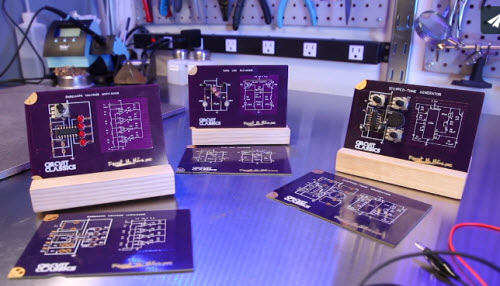
I’m very lucky that Star sent me a couple early prototypes to play with. Today was a rainy Saturday afternoon, so I loaded a few tracks from Information Society’s Greatest Hits album (I am most definitely a child of the 80’s) and fired up my soldering iron for a walk down memory lane. I remembered how my dad taught me to bend the leads of resistors with pliers, to get that nice square look. I remembered how I learned to use masking tape and bent leads to hold parts in place, so I could flip the board over for soldering. I remembered doodling circuits on scraps of paper after school while watching Scooby-Doo cartoons on a massive CRT TV that took several minutes to warm up. Things were so much simpler back then …
I couldn’t help but embellish a little bit. I added a socket for the chip on my Bargraph Voltage Indicator (when I see chips in sockets, I hear a little voice in my head whispering “hack me!” “fix me!” “reuse me!”), and swapped out the red LEDs for some high-efficiency white LEDs I happened to have on the shelf.
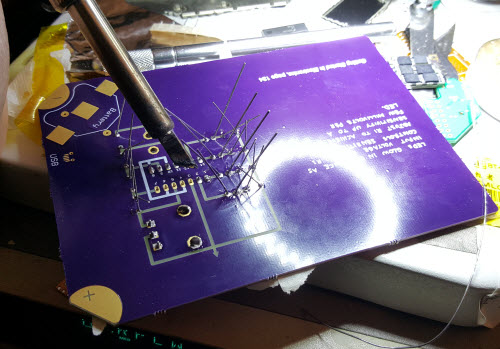
I appreciated Star’s use of elongated pads on the DIP components, a feature not necessary for automated assembly but of great assistance to hand soldering.
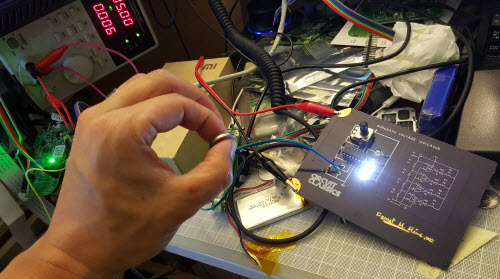
It works! Here I am testing the bargraph voltage indicator with a 3V coin cell on my (very messy) keyboard desk.
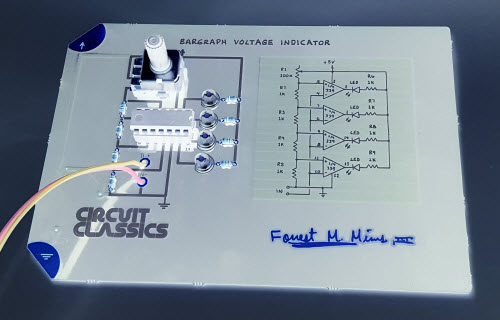
Voilà! My rendition of a circuit classic. I think the photo looks kind of neat in inverse color.
I really appreciate seeing a schematic printed on a circuit board next to its circuit. It reminds me that before Open Hardware, hardware was open. Schematics like these taught me that circuits were knowable; unlike the mysteries of quantum physics and molecular biology, virtually every circuit is a product of human imagination. That another engineer designed it, means any other engineer could understand it, given sufficient documentation. As a youth, I didn’t understand what these symbols and squiggles meant; but just knowing that a map existed set me on a path toward greater comprehension.
Whether a walk down nostalgia lane or just getting started in electronics, Circuit Classics are a perfect activity for both young and old. If you want to learn more, check out Star Simpson’s crowdfunding campaign on Crowd Supply!
